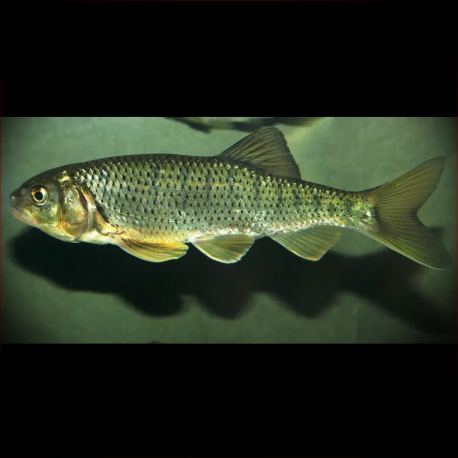More info
Datasheet
| Minimum Tank Size | 650 litres / 171.71 US gallons |
| Maximum Size | 20.0cm / 7.87inches |
| Temperature | 18°C / 64.40°F - 26°C / 78.80°F |
| Hardness | 2.02dgH / 36ppm - 15.02dgH / 268ppm |
| pH | 6.0-8.0 |
Behaviour
The Barilius Bendelisis is unsuitable for general community tanks due to its specific environmental requirements and fast-swimming, vigorous feeding behavior. It may outcompete or intimidate slower-moving and less bold species during meal times. Tankmates should be similarly-sized, robust cyprinids such as Dawkinsia, other Barilius, and larger Devario or Rasbora species. Bottom-dwelling companions could include Garra, Crossocheilus, Botia, and Schistura species. While gregarious, this species is shoaling rather than schooling, developing a pecking order, and should be kept in groups of five or more individuals to prevent bullying or aggressiveness.
Feeding and Diet
Barilius Bendelisis primarily preys on surface insects but may also consume small fish and benthic invertebrates in nature. In aquariums, offer high-quality dried foods supplemented with live and frozen options like chironomid larvae, Artemia, and chopped earthworms. They may also graze on algae and consume larval worms, insect larvae, and copepods.
Reproduction & Dimorphism
Information on the reproductive behavior of Barilius Bendelisis is currently unreported. Adult females are less brightly colored, slightly larger, and thicker-bodied than males. Nuptial males develop prominent tubercules on the head and exhibit reddish pigmentation on the body.
Habitat and Distribution
Barilius Bendelisis inhabits well-oxygenated, moderate to fast-flowing rivers and streams with substrates of gravel, cobbles, boulders, and exposed bedrock. In the Indrawati River basin (Nepal), it was found in fast-flowing rivers with a diverse range of sympatric species like Botia almorhae and Schizothoraichthys sp. The species is distributed throughout India, Bangladesh, Nepal, possibly Bhutan, and has been recorded in regions like Pakistan, Myanmar, Thailand, and Sri Lanka.
Aquarium Setup
To recreate a suitable habitat, create an aquarium resembling a flowing stream with rocks, sand, gravel, and water-worn boulders as the substrate. Use driftwood and branches for decoration but maintain ample open swimming space. Hardy aquatic plants like Microsorum or Anubias can be added. Clean water with high oxygen levels and moderate water movement is crucial for their well-being. Regular water changes and a tightly fitting cover are essential, as these fish are known to jump.

